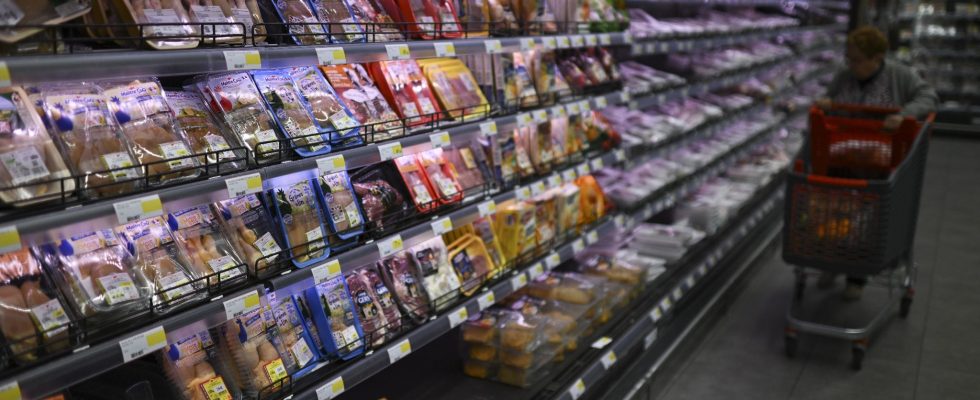From good student to dunce’s hat of food inflation in Europe. If France was one of the least inflationary countries at the start of 2023, France is now lagging behind with a later slowdown, according to the latest barometer from panelist NielsenIQ for the specialist magazine LSA.
In addition to France, the panelist examined the prices of thousands of fresh and self-service consumer products, food and health and beauty products, in six Western European countries: Germany, Belgium, Spain, Italy, Portugal, United Kingdom.
NielsenIQ’s findings are clear, as reported Le Figaro : “Today, France is the country where prices have increased the most since January 2022”. France thus comes out on top with cumulative food inflation of 17.9% between January 2022 and August 2023. It is followed by Spain, at 17.2%, the United Kingdom at 16.7%, Italy at 16.4%, Germany at 15.5%, Belgium at 14.9% and Portugal at 12.4%.
The French exception
However, France was among the best placed countries in January 2023, with annual food inflation which stood at less than 12%, just behind Belgium, close to 11%. Since then, other countries have considerably reduced their food inflation, such as Spain, which was at 15% increase over one year in January 2023 and which reached 8.9% in September 2023, notes Le Figaro. France is now at 9.5% over one year, ahead of its neighbors, such as Germany (7.1%) and Italy (6.7%). Only Belgium is doing worse, being above the 10% mark.
“From the start of the second half of 2023, the rate of inflation in Europe began to decline and then fall, with France being an exception by not following this trend until later, Emmanuel Fournet told LSA magazine, Customer Success Leader France from NielsenIQ, as reported by BFMTV.
As also recalled at Figaro Daniel Ducrocq, who manages distribution for Western Europe at NielsenIQ, in France, “the price war raged for four to five years, the brands wanted to use low prices, which led to strong deflation” . Thus, “between 2017 and 2022, products of the same brand recorded a price drop of 15% on average”. France is therefore experiencing a sort of “catch-up” in prices, linked in part to the war in Ukraine.
Some signs of slowing inflation
According to Daniel Ducrocq, another parameter explains France’s poor position: “For us, inflation appears later because we only carry out one commercial negotiation per year, while other European countries negotiate several times during the year. year.” The annual commercial negotiations between supermarkets and their agro-industry suppliers, which determine the conditions of sale (purchase price, shelf space, promotional calendar, etc.) for the entire following year, are concluded traditionally on March 1st.
But the government has decided to bring them forward exceptionally for the year 2024, on the grounds that the reductions in numerous prices of raw materials (wheat, sunflower, corn, oils, etc.) were not passed on the previous year in the prices invoiced. to distributors by manufacturers. A final vote by the National Assembly expected this Tuesday at the end of the day should ratify the bill, already adopted at first reading.
According to provisional data communicated on October 31 by INSEE, prices increased by 4% in October over one year, with food prices increasing by a further 7.7%. “The inflationary crisis is behind us,” said Economy Minister Bruno Le Maire on BFMTV and RMC on November 7.
But if certain prices have been falling for several months, they are still far from returning to their 2019 level. Others could even increase. The CEO of Coca-Cola announced on Monday at the Parisian a 7% increase in gross prices offered to distributors.
